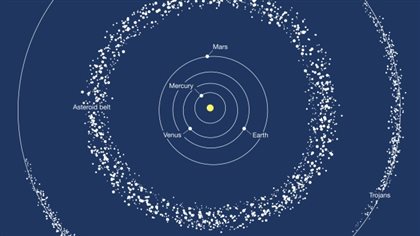Asteroid 300163 also has the cometary designation of 288P, since 2011.
Astronomers at the Max Planck Intstitute for Solar System Research, in Gernany, looked at this asteroid-comet last year and found instead of a single entity, there were actually two.
At almost the same mass and size the two orbit each other about 100 kilometres apart.
Andrew Fazekas, the Night Sky Guy and author of ‘Star Trek: The Official Guide to Our Universe’, says this discovery has the scientific community ‘scratching their heads’.
Listen“We’re talking about the discovery of a new type of object in the solar system, so this is something in our cosmic backyard, it’s not across the universe, it’s not around another star, this object is within our solar system and it’s something that is quite unexpected.” Fazekas says.

Fazekas says the two objects are really “a pair of rocks, that are each over 800 metres across, they’re separated by 100 kilometres and they’re enveloped by a haze, like a ghostly blue-ish coloured haze, and a comet-like tail.”
He says they have the characteristics of both asteroids and comets as well.
Asteroids are hard and stony by nature, and found most often between Mars and Jupiter. Comets consist mostly of water and ice, Fazekas likens them to a dirty snowball, and when they get close to the sun they give off those lengthy tails.
Along with the excitement of finding a new type of object, “the implications can be quite grand” Fazekas says.
He says that the theories around how water came to earth, may be affected by this new discovery. The two prevailing theories currently, are that it was either the result of an asteroid or a comet. Now perhaps there is a third possibility.







For reasons beyond our control, and for an undetermined period of time, our comment section is now closed. However, our social networks remain open to your contributions.